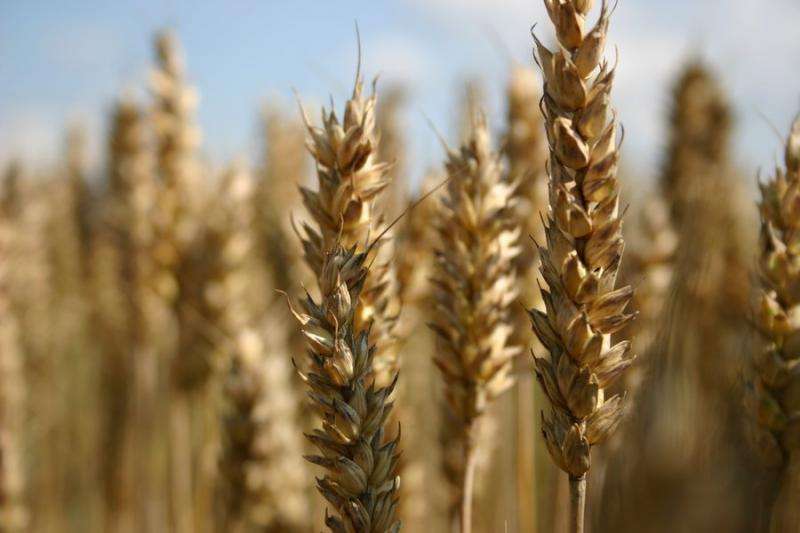Fungi may help drought-stressed wheat

Scientists at Aarhus University have discovered that fungi associated with plant roots may improve growth and yield of drought-stressed wheat.
Water scarcity has a negative impact on wheat production. As a consequence of exposure to drought, crops show poorer growth and lower yield. This is a serious problem as the predicted increase in frequency of extreme climate episodes will lead to multiple drought conditions during crop growth which in turn will reduce the yield of wheat, one of the world's most important foods.
The UN Intergovernmental Panel on Climate Change predicts that drought stress in crops will become increasingly serious in the future. Globally, wheat yield is only 30-60 percent of its potential.
Fungi may help
A specific group of useful fungi - the so-called arbuscular mycorrhizal fungi (AM fungi)—may be able to help alleviate drought stress in wheat. These fungi live in a symbiotic relationship with plant roots. Recent research from Aarhus University demonstrates that the fungi can improve growth and yield in some wheat varieties under drought stress.
Previous experiments have demonstrated that this symbiotic relationship involves a mutual exchange of nutrients between the crop and the fungus. The fungus provides inorganic nutrients, in particular phosphorus, to the plant. Furthermore, the fungi help crops fight biotic stress factors such as diseases and pests.
Scientists from the Department of Agroecology at Aarhus University have recently examined whether the association with AM fungi can alleviate drought stress in wheat.
"We know that these fungi are important in relation to the absorption of nutrients and water as well as for tolerance to diseases, but what about extreme conditions such as droughts and heat? We examined if it is possible to increase wheat's tolerance to drought by exploiting the plants' symbiosis with arbuscular mycorrhizal fungi," says Associate Professor Sabine Ravnskov from the Department of Agroecology at Aarhus University.
Drought stress leads to water deficits in crops, which affects crop growth and development and a number of metabolic processes in the plants, such as photosynthesis and primary metabolism
Different responses in different wheat cultivars
The scientists used two different varieties of spring wheat. One was Vinjett, which is drought-tolerant, and the other was '1110' (Kloka WM1353 from IPK, Gattersleben, Germany), a drought-sensitive cultivar. The plants were divided into two groups; one group was given sufficient water and the other group was exposed to drought stress. Half of the plants in each group were inoculated with AM fungi and the other half were grown without the fungi.
The two cultivars of wheat reacted differently to drought stress and inoculation with AM fungi. The drought sensitive cultivar '1110' benefited from the AM fungi under drought conditions, resulting in increased biomass, improved photosynthesis and improved nitrogen-use. Under drought conditions and without useful AM fungi, the drought tolerant wheat cultivar performed better.
More information: Qin Zhou et al. Changes in carbon and nitrogen allocation, growth and grain yield induced by arbuscular mycorrhizal fungi in wheat (Triticum aestivum L.) subjected to a period of water deficit, Plant Growth Regulation (2014). DOI: 10.1007/s10725-014-9977-x
Provided by Aarhus University




















